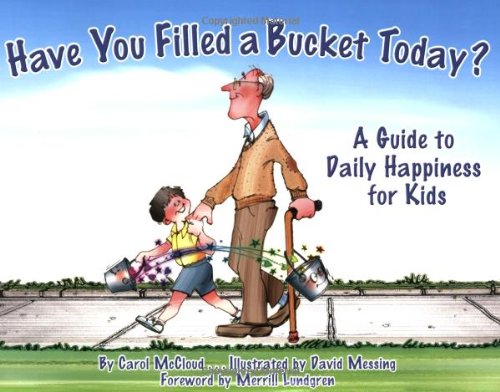Featuring King or Queen of the Jungle of the Week
Our student of the week is
Counseling Corner
What are bucket fillers?
Your child may be coming home saying, "I earned a bucket filler today!" Your response is, "That's great, honey!" But, you are probably wondering what in the world does that mean. Well our school has adopted this idea from the book, Have You Filled a Bucket Today?: A Guide to Daily Happiness for Kids by Carol McCloud. In a new twist on the Golden Rule, Have You Filled a Bucket Today? explains to children that we all carry an invisible bucket in which we keep our good thoughts and feelings. When our buckets are full, we are happy; when they are empty, we are sad. It's important to know that when we fill someone else's bucket, we fill our own, and when we "dip" in someone else's bucket, we dip in our own bucket, too.
Each month Mrs. Lloyd introduces a new character trait to our class to focus on. Throughout the day I look for children exhibiting those specific traits that we are focusing on. Each child has a pocket with a card inside with their name on it and when I see a child displaying those traits I punch a hole in their card or "bucket filler". At the end of each month I turn in the name of the child with the most and they are recognized at the end of the nine weeks assembly. Once the whole class gets their bucket filler card completely punched out we will have a classroom celebration.
Below is the list of character traits for each month:
August: Responsibility
September: Self-discipline/cooperation
October: Respect/Courtesy
November: Citizenship/Patriotism
December: Altruism/ Unselfishness
January: Human Worth/Self-esteem
February: Honesty
March: Hard work/Knowledge
April/May: Justice/Fairness
Jellybean Jamboree
Because I feel that life-skills are such an essential part of learning and should be taught at an early age, I have incorporated some classroom guidance lessons into daily schedule whenever possible. The children have absolutely loved the lessons that we have learned so far and really seem to relate to the topics that face the jellybeans. I make it a big deal when a new jellybean is introduced and in conclusion with the last lesson of the unit for that particular jellybean we eat that color jellybeans. Let's just say the candy store in the mall seem to really appreciate my contribution to teaching life skills :) Below is a list of the jellybeans and the goal and skill for each.
Jellybean Jamboree brings different life-skill topics to the world of the very young child. The topics are presented in six units, and young children associate these important topics with their jellybean counterparts. Each unit contains short, to-the-point lessons followed by fun-to-do activity sheets. Children will delight as:
Angry Arlene, The Grumpy Red Jellybean teaches them to identify their anger points and handle anger in an acceptable manner.
Emotional Eugene, The Feeling Blue Jellybean examines the emotions of happiness, sadness, hurt, and everyday feelings.
Decision-Making Dean, The Problem-Solving Orange Jellybean delves into the pros and cons of problem-solving and the consequences associated with each.
Me, Maureen, The Self-Knowing Lavender Jellybean provides them with the opportunity to examine their strengths and develop more self-confidence.
Friendly Francine, The Neighborly Pink Jellybean helps them realize what it takes to be a good friend.
Ornery Ordean, The Misbehaving Green Jellybean explains why misbehaviors such as cheating, lying, stealing, and interrupting make children lose friends.
Subscribe to:
Comments (Atom)







